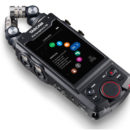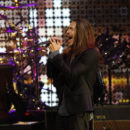Expert: A person who has a comprehensive and authoritative knowledge of or a skill in a particular area.
Advice: Guidance or recommendations offered with regard to prudent future action.
Give advice: To tell someone what you think they should do in a particular situation.
Sorry – just checking to make sure I’m in the right place. I’m not. Whatever knowledge I may possess is far from comprehensive and absolutely not authoritative. I would never presume to tell anyone what they should do.
The second most annoying posts I confront as I scroll through the Facebook newsfeed (well, there’s your problem…) are the guru memes. “Never argue with someone who believes their own lies” announces one, confidently. Don’t necessarily agree with that one. Don’t necessarily know what whoever said it thinks it means. Don’t remember asking for that little nugget of advice. [The most annoying posts are, of course, the politically themed, the point of which are to show that “My team is good and right – your team is evil and wrong, so, HA!”].
For what purpose and toward what end, then, have your eyes crossed paths with these words. It was meant to be. I know that it was meant to be because it has occurred. Therefore, I am, surprisingly, in the right place and so are you, so let’s get to it.
 I’ve decided that the best use of our time together (unless you’ve already tired of this and scrolled it away into digital oblivion) is to analyze one of my compositions, both music and lyrics. [Well, we’ll begin with the music and see how far we get]. Prior to reading on, I recommend that you listen to the song (Bandcamp, YouTube, wherever…). You most likely have never heard of me, my band, or any of my songs, so give a listen and then if you think it’s a cool song and would be interested in understanding its creative underpinnings, please proceed to the next paragraph. The intent is that you might be able to extrapolate some of these musical ideas and apply them to your own creative processes, if you’ve determined them to be worthwhile. The name of the song is “Hello L.A.” It is Track #2 on Side A of my band Emodulari’s debut LP, “Damnatio Memoriae”, available for purchase on our Website: emodulari.com The record also contains our hit single “CRANIOTOMY” – check out the award-winning video on our YouTube channel. To listen to “Hello L.A.” with its accompanying lyric video: youtube.com/watch?v=LnenIH5iC6c If you prefer to listen to the audio only, visit our Bandcamp channel: emodulari.bandcamp.com Now – ‘take 5’ (3:02) and have a listen. See you soon.
I’ve decided that the best use of our time together (unless you’ve already tired of this and scrolled it away into digital oblivion) is to analyze one of my compositions, both music and lyrics. [Well, we’ll begin with the music and see how far we get]. Prior to reading on, I recommend that you listen to the song (Bandcamp, YouTube, wherever…). You most likely have never heard of me, my band, or any of my songs, so give a listen and then if you think it’s a cool song and would be interested in understanding its creative underpinnings, please proceed to the next paragraph. The intent is that you might be able to extrapolate some of these musical ideas and apply them to your own creative processes, if you’ve determined them to be worthwhile. The name of the song is “Hello L.A.” It is Track #2 on Side A of my band Emodulari’s debut LP, “Damnatio Memoriae”, available for purchase on our Website: emodulari.com The record also contains our hit single “CRANIOTOMY” – check out the award-winning video on our YouTube channel. To listen to “Hello L.A.” with its accompanying lyric video: youtube.com/watch?v=LnenIH5iC6c If you prefer to listen to the audio only, visit our Bandcamp channel: emodulari.bandcamp.com Now – ‘take 5’ (3:02) and have a listen. See you soon.
Welcome back! [To understand what follows requires, naturally, a basic knowledge of the language of music theory – or an attitude of fearlessness in the face of a new adventure]. The song begins with me playing a G major chord with an added C#-augmented fourth (the so-called ‘devil’s interval’) in an arpeggiated finger-picking style. This chord is played throughout the four-measure intro and continues for the first eight bars of the first verse. At this point, it may have been assumed by the listener that this G major-aug4 is the root-chord (I) of the song and we are in the key of G. However, in measures 9,10,11 and 12 we hear played in succession B minor-F# major-G major-D major. We now realize that we have, in fact, been in the key of D major and the G aug4 was actually the IV chord. This sequence repeats [B minor-F# major-G major…] except instead of resolving again to the D major, we return to the F# major (III major) and hold that chord for an additional measure to help us segue into Verse 2. So far, the song’s structure is: Intro (4 bars), Verse 1 (16 bars) Segue (1 bar).
Side-note/shout-out before we continue: This analysis will not deal with any other of the essential aspects which were integral to the production of this track, transforming the musical building blocks under discussion into the fully-formed creation you have just listened to. These aspects include Dave Reiss’ amazing arrangement and production, in addition to his indispensable electric guitar and bass playing, Rich Bozek’s superb drumming, the beautiful (see: Plato) and sublime (see: Burke, not Kant) harmonies sung by Natasha DiMarco, the behind-the-scenes wizard-like engineering and mixing by Jon “JRod” Ciorciari at JRod Productions and the skillful mastering by Alan Douches at West West Side Music (not a typo – it is West West Side Music).
Verse 2 repeats the pattern established in verse 1 precisely, through measure 14. Then, unexpectedly, in preparation for the chorus, instead of shifting a half step up from the F# major to G major, the tune progresses to a B major chord for two bars, momentarily modulating to a new key, with the F# major now having performed as the V chord resolving to the root chord B major. But the listener has been deceived once again, for that B major chord is actually being used as a launching pad to propel them into the chorus where they will experience a shift in mood, tone, and rhythm, all accompanied by further unpredicted harmonic/chord changes. We have now added Verse 2 (16 bars), for a subtotal of 37 measures.
The chorus begins with a hard landing on an E major chord, insinuating that the previously heard B major chord was in fact acting as a V chord with the intention of resolving to the key of E major. However, this resolution is short-lived, for the next chord movement is to a C major7 [the flat VI in E major] for two quarter- note beats, followed immediately by G major for a length of three quarter- note beats. Unlike all the preceding measures, we have now left the standard, comfortable 4/4 meter, and find ourselves slightly off-balanced with consecutive measures of 4, 2 and 3 quarter notes. Harmonically as well, the listener is again unsure of their footing. Is the C major (7) chord now behaving as a IV chord, and have we actually found ourselves back at what we thought we had mistaken for our original home – G major? We shall see. Meanwhile, the second half of the chorus repeats the first half, except the G major chord accompanies the lyric [val-LEY] for an additional beat, rendering three bars of 4, 2 and - this time – 4 beats respectively. The full chorus repeats, with the G major chord lingering for an additional measure as a segue into verse 3. The number of measures in the chorus could be counted in a variety of ways. According to my calculations, the chorus contains thirteen bars (including the segue) for a total so far of 50 measures. The simplified structure would be A, A1, A, A1 B, B1. Notice that the verses are arranged and played as sort of a pop/folk tune with a discreet Latin rhythm layered in, whereas the chorus has a driving, punkish vibe.
The entire song now repeats with verse 3, verse 4, and the chorus. However, instead of the G major chord lingering for a measure, the chorus is played again – this time a full step down with the chords D major-B flat major7-F major. Finally, the chorus is heard for a third time, having crept back up that same whole step, except instead of ending on the G major, we hold the C major7 chord and fade over the word “man”. We never did make it home. Or maybe home is wherever we are. In my estimation, it took us about 130 measures to get there.
Well, I hope you’ve found this essay to be somewhat interesting and helpful to you as a songwriter or as just someone who digs music and likes learning a little about what makes that clock tick. Now go back and listen to the song again. Has what you have learned about it changed the way in which you listen to it? Is it merely the sum of its parts or is it a whole, organic being? What are/were we before we were/are [fill in the blank(s)]?
I guess here’s what I would like to say: It’s ok to wander around in different key and time signatures. It’s ok that we have switched (randomly or not) from third (“the listener”) to first (“I would like”) to second (“helpful to you”) person in the course of our small journey. I even managed to slip in the ‘royal we’ (can any “achievers” out there spot it?). When I write a song, I’m not thinking about any of the in-the-weeds stuff painstakingly dissected above. The songs come down from their magical abode where they’ve been hanging out for a billion years waiting patiently to reveal themselves through the songwriter’s spirit. They become what they were always meant to be. I know this because it has occurred. I’m grateful to be a part of that. Never got to discuss the lyrics, nor the emotional/psychological effects the above musical choices may or may not bestow upon the listener. Next time. In the meantime, thanks for indulging this non-advice from a non-expert.
ELI SOIEFER is the frontman of, and songwriter for, Emodulari; the edgy, imaginative, Nyack, NY based Alt-Indie Rock band that takes its name from the Latin word meaning the setting of poetic ideas to rhythm. The lyrics are front and center, whether dealing with hot button issues or exploring themes like the divine in nature, dealing with loss, the search for redemption and spiritual awakening. The music is nuanced, while seeped in the traditions of American rock.













